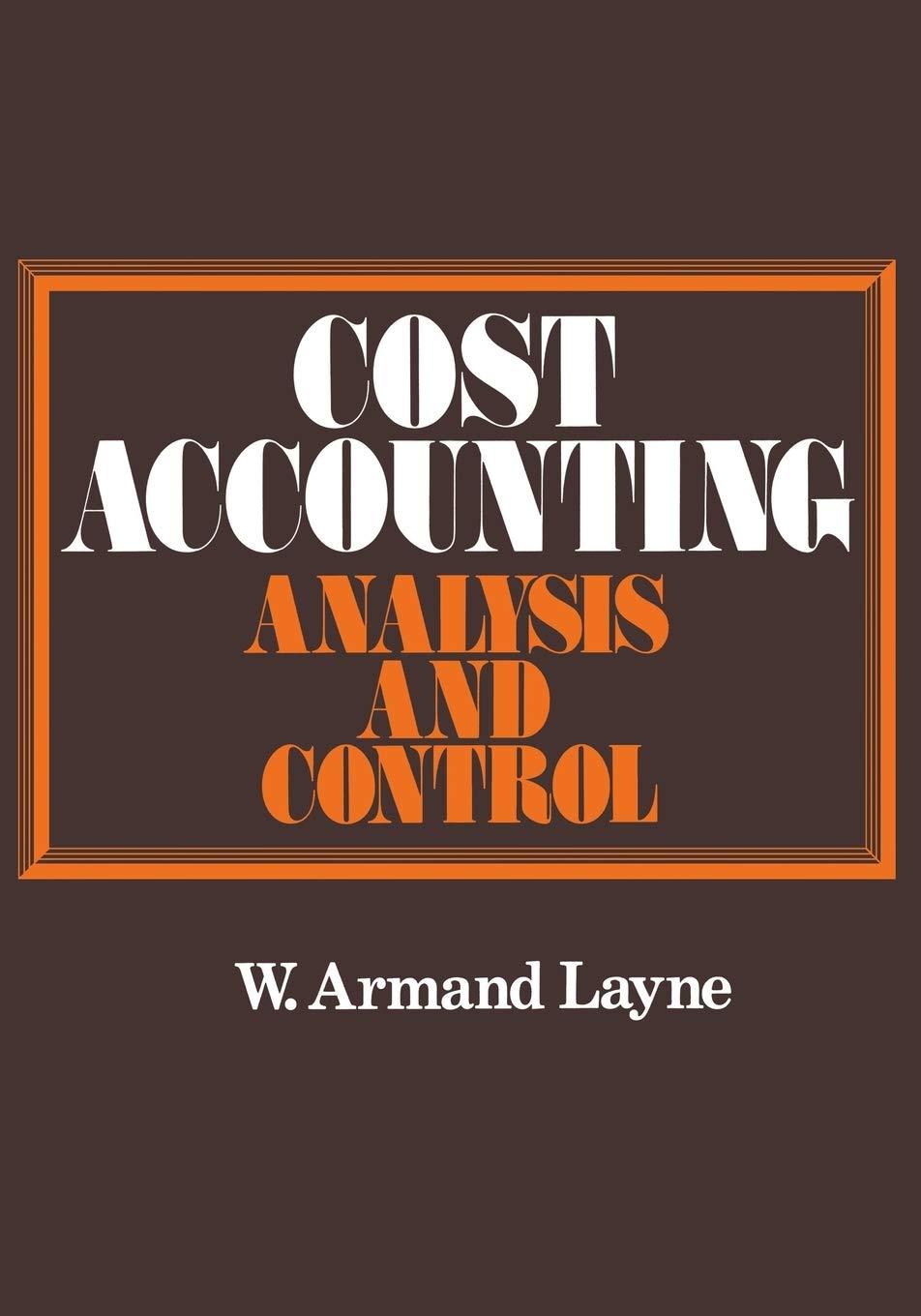Pink Ltd is experiencing some slight problems concerning two stock items sold by the company. The first
Question:
Pink Ltd is experiencing some slight problems concerning two stock items sold by the company.
The first of these items is product EXE, which is manufactured by Pink. The annual demand for EXE of 4000 units {which is evenly spread throughout the year) is usually met by production taking place four times per year in batches of 1000 units. One of the raw material inputs to product EXE is product DEE, which is also manufactured by Pink. Product DEE is the firm's major product and is produced in large quantities throughout the year. Production capacity is sufficient to meet in full all demands for the production of DEEs.
The standard cost of products EXE and DEE are:
STANDARD COST-PRE UNIT Raw materials-purchased from external supplies
-DEE standard cost Labour-unskilled
-skilled Variable overhead Fixed overhead PRODUCT EXE DEE
$ $
13 8 22 7 4 9 5 5 3 4 2
$60 $22 Included in the fixed overhead for EXE is the set up cost for each production run. The cost of each set up, which applies irrespectively of the size of the production run, is:
(i) Labour cost-skilled labour (ii) Machine parts 66 70 Total $136 Cost Accounting The 'machine parts' relate to the cost of parts required for modifications carried out to the machine on which EXE is produced. The parts can be used for one run only, irrespective of run length, and are destroyed by replacement on reinstatement of the machine. There are no set up costs associated with DEE.
The cost of financing stocks of EXE is 15 per cent per annum. Each unit of EXE in stock requires 0.40 m2 of storage space and units cannot be stacked on top of each other to reduce costs. Warehouse rent is $20 per annum per m 2 and Pink is required to pay only for storage space actually used.
Pink is not working to full capacity, and idle time payments are being made to all grades of labour except unskilled workers. Unskilled labour is not guaranteed a minimum weekly wage, and is paid only for work carried out.
The second stock item causing concern is Product WYE. Product WYE is purchased by Pink for resale and the 10000 unit annual demand is again spread evenly throughout the year. Incremental ordering costs are $1 00 per order, and the normal unit cost is $20. However, the suppliers of WYE are now offering quantity discounts for large orders:
Quantity ordered Up to 999 1000-1999 2000 and over Unit price $
20.00 19.80 19.60 The purchasing manager feels that full advantage should be taken of discounts, and purchase should be made at $19.60 per unit using orders for 2000 units or more. Holding costs for WYE are calculated at $8.00 per unit per annum, and this figure will not be altered by any change in the purchase price per unit.
REQUIRED
(a) Show the optimum batch size for the production of EXEs. If this differs from the present policy, calculate the annual savings to be made by Pink Ltd from pursuing the optimal policy Briefly explain the figures incorporated in your calculations (the time taken to carry out a production run may be ignored)
(b) Advise Pink Ltd on the correct size of order for the purchase of WYEs
(c) Briefly describe two major limitations or difficulties inherent in the practical application of the model used in
(a) to determine the optimum batch size ACAA, PE Section 2, Paper 14, Accounting 5, Management Accounting, June 1981.
Step by Step Answer:






